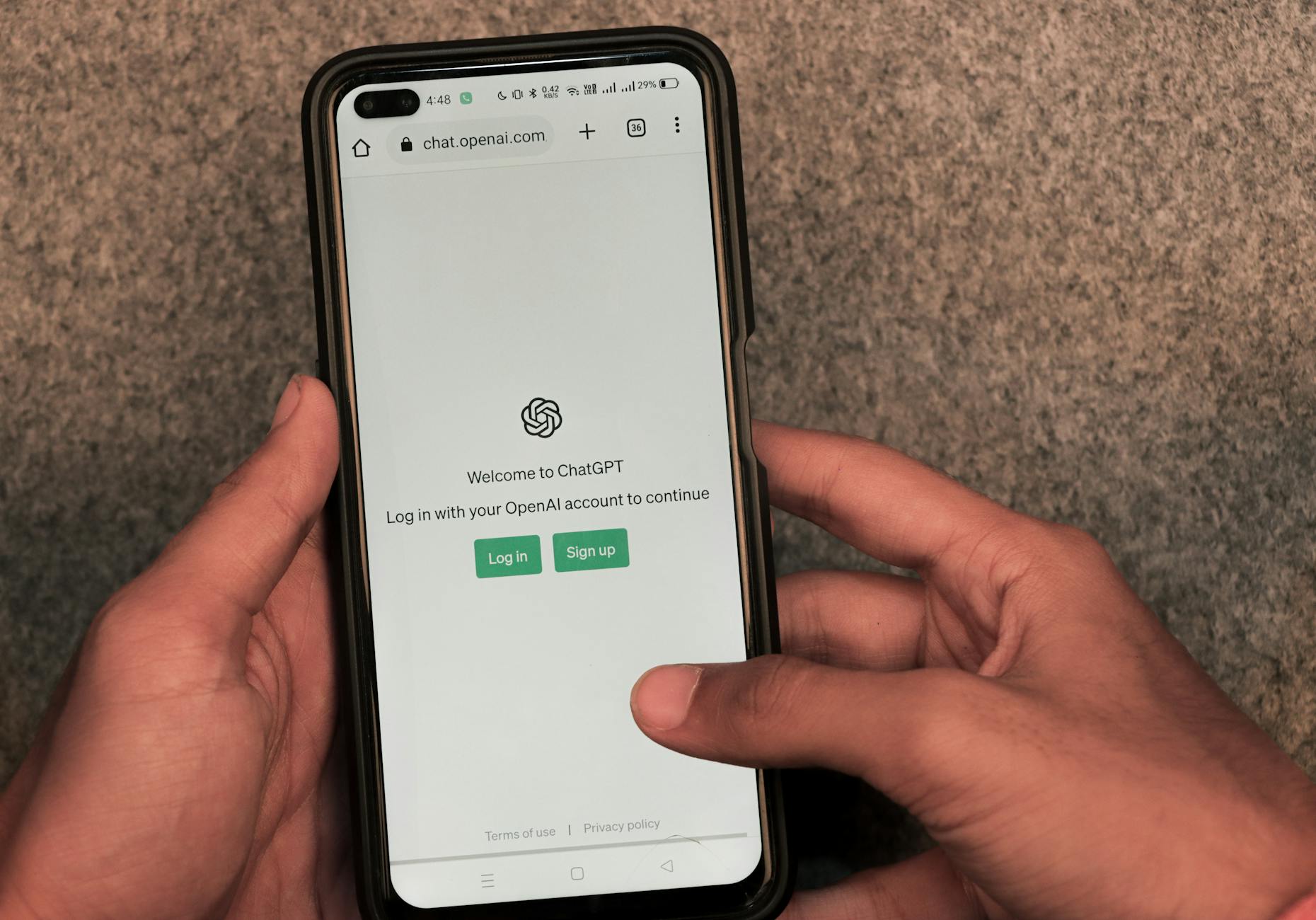Why Bots Mistake False Data as True in Critical Sectors [2025 Update]
Bots often treat false data as true when signals or patterns in the input match what they’ve been trained to see as reliable. In sectors where accuracy protects financial outcomes, health, or safety, this opens the door to problems that ripple quickly. These systems work fast and at large scale, which means even small mistakes can spread. Many companies now face the real challenge of keeping automation dependable as threats and mistakes grow more advanced.
Industries such as finance, healthcare, and transportation depend on automation to keep processes running and data safe. Yet, if a bot can’t tell false from true data, trust in entire systems may fall. In these fields, a single wrong flag or signal can cost millions or lead to safety risks. We’ll break down why these errors happen and what can be done to stop them before bigger consequences arise.
YouTube video: https://www.youtube.com/watch?v=p-ZLBfLiksA
How Bots Interpret Data
Bots don’t see the world the way people do. They look for patterns, compare numbers, and sift through massive piles of information in a fraction of a second. Whether they’re monitoring a power grid, running trades on Wall Street, or reviewing medical scans, these systems depend on data and algorithms to draw conclusions at scale. When mistakes happen and false data looks true, the root cause often comes from how bots are trained and how they interpret signals.
Training Data Quality
Bots learn from what we give them. Their accuracy depends on clean, high-quality, and verified training data. When building a bot or a machine learning model, we feed it examples that teach it how to spot reliable patterns and ignore noise. If these examples are flawed or incomplete, even the best-designed algorithms make mistakes.
For instance, let’s say a team develops a bot meant to detect failures in a power grid. If most of the training data shows outages only during storms, the bot might learn that bad weather always signals danger. Later, if false data appears during clear conditions, the bot may miss the warning or treat it as safe, simply because it has not learned to spot trouble outside the scenarios it has seen.
When data sets miss edge cases or reinforce bias, bots:
- Accept misleading signals as definite proof
- Fail to recognize rare but important events
- Treat obvious errors as facts if similar patterns were in their training
So, the accuracy of automation always ties back to the data we feed during training. If the ground truth isn’t firm, every prediction or flag a bot makes can be shaky.
Pattern Recognition and Correlation
Pattern recognition sounds complex, but it just means searching for things that repeat in data. Bots do this at high speed, noticing tiny, invisible-to-human similarities in signals. This method powers everything from basic spam filters to advanced monitoring systems in industry. Bots don’t stop to think; they match dots.
However, the risk is that bots can confuse correlation (things happening at the same time) with causation (one thing causing the other). For example, in a power grid, a bot may spot that demand usually drops as weather cools. If it then sees demand drop sharply on a hot day, it could misread the event, linking unrelated data points only because they look similar to past events.
Problems with this method include:
- Mistaking random patterns for real causes
- Overreacting to flukes or noise in the data
- Missing context that a human expert would catch
These errors don’t come from laziness or lack of speed; they come from following rules hardwired in their design. When seen from the outside, a bot’s quick connection might look smart, but without strong data and real checks, it can quickly mistake a blip for the truth.
 Photo by Sanket Mishra
Photo by Sanket Mishra
Common Causes of Bots Believing False Data
Bots shape how entire industries make decisions. They speed up processes, cut human error and let organizations act quickly. Still, even the sharpest bots can get fooled by false data, and the reasons are not always obvious. Most commonly, these errors trace back to how data enters the system, how bots process it and how repeated mistakes become patterns.
Data Poisoning and Manipulation
Data poisoning is when attackers or poor controls let false or misleading data into the systems bots use to learn or make predictions. The process can be deliberate (from a bad actor) or accidental (from open, unchecked sources).
For example:
- In finance, hackers might inject fake payment transactions into training data to trick fraud detection.
- In healthcare, poorly labeled scans could train bots to flag healthy tissue as cancer or miss serious diseases.
- In logistics, a bot could be trained on delivery data that includes made-up delivery times or fake locations.
Bad actors may target these systems to:
- Change model behavior for personal gain.
- Cause bots to ignore true threats.
- Create confusion in automated pipelines.
Even when humans do not intend it, uncontrolled data from the web or open APIs can flood bots with noise. If systems trust these sources, the poison spreads quickly and decisions lose accuracy.
Overfitting and Lack of Context
Overfitting happens when a bot learns too much from the training data—so much that it thinks rare cases are normal. In plain terms, the bot sticks rigidly to small patterns in its lessons and treats outliers as if they are the rule.
We see overfitting when:
- In financial systems, a crash due to one unique event makes the bot expect disasters after every similar, minor signal.
- In healthcare, a bot reviewing thousands of patient records may spot a single pattern and assume it means disease, even when it’s common and harmless.
- In logistics, an unusual traffic event in one city leads the bot to predict delays every time similar weather is reported.
Lack of context adds to the problem. Unlike experts, bots do not have life experience or extra knowledge to question odd signals. They might flag bizarre data as normal just because it matched a pattern from before.
Indicators of these issues include:
- Rigid predictions on strange inputs.
- Ignoring wider trends in data.
- Promoting exceptions as typical results.
Echo Chambers and Feedback Loops
Feedback loops start when bots make decisions that later influence the same data used to train or retrain them. If errors slip into the cycle, false data can get stuck and amplified, turning rare mistakes into “truth.”
Some examples from key industries:
- In finance, if a risk-detection bot wrongly flags legitimate transactions and later, these flagged transactions train the system again, it teaches itself that normal actions are criminal.
- In healthcare, bots that review medical notes may begin labeling rare side effects as common illnesses if doctors copy bot-generated notes back into health records.
- In logistics, if bots reroute vehicles based on faulty predictions and these changes are logged as factual outputs, the system will start “learning” from its own errors.
Feedback loops can quickly spin out of control:
- Wrong ideas get stronger with each cycle.
- False patterns become part of the bot’s rulebook.
- Bias increases as the same data circles back for more training.

Photo by Google DeepMind
Keeping systems free of echo chambers means not letting bots grade their own homework or treat their outputs as ground truth. Instead, outside checks and regular audits help keep these cycles in check.
When we understand these core causes—poisoned data, overfitting, and feedback cycles—we’re in a stronger position to build smarter, safer bots that can tell the difference between real and fake signals.
Reducing Errors: How We Can Help Bots Discern Truth from Falsehoods
As bots and automated systems grow more common in sectors like finance, healthcare, and the power grid, the need for better safeguards against bad data becomes more urgent. Simple mistakes can quickly scale, leading to major confusion or risk. Relying only on automation is not enough. We need methods that make it easier for bots to question, verify, and spot what’s real, not just what seems familiar. Here are practical steps to help limit wrong data and teach bots to tell the difference between fact and fiction.
Human-in-the-Loop Approaches: The Value of Direct Human Review
No matter how advanced, bots lack intuition. They make judgments based on rules and patterns, which means they will miss subtle clues or rare cases that humans notice right away. By placing people at key points in the automation pipeline, we add a much-needed layer of safety.
Direct human review can:
- Catch outliers bots miss, especially when new threats appear.
- Break feedback loops by questioning repeated errors before they lock in.
- Add context from experience, something data alone can’t provide.
- Pull the emergency brake when the bot is about to act on shaky data.
We’ve seen the benefits in systems that monitor the power grid or complex financial trades. When human experts review a batch of flags from a bot, they keep mistakes from spreading and help improve the bot’s training for next time.

Photo by Hyundai Motor Group
Regular Audits and Validation: Checking Bots Before Errors Scale
We can’t rely on bots to check their own work. Regular audits and clear validation systems stop small mistakes from becoming big problems. This works by applying outside checks at set intervals or whenever the system flags something odd.
Some simple ways to validate bot outputs include:
- Randomly sampling alerts or decisions for manual review.
- Using “golden data” sets, where we already know the right answer, to test current accuracy.
- Setting up dashboards or alerts that highlight big swings or strange changes in data.
- Cross-checking results from two or more independent bots.
Auditing routines help us spot bias, confirm model health, and find places where training data needs a boost. In sectors like the power grid, regular oversight is not just helpful; it stops disaster.
Diverse Data Inputs: Broader Data for Better Detection
Bots lock in on errors when their datasets are too narrow or go too long without updates. By feeding systems with diverse, regularly refreshed data, we make them better at flagging and rejecting falsehoods.
We should:
- Pull data from multiple sources, like weather, social trends, or sensor logs, not just a single feed.
- Mix older, stable records with up-to-date, real-world events.
- Update training data as soon as new types of errors are discovered.
- Rotate data inputs to keep bots alert to odd scenarios they haven’t seen.
When monitoring a power grid, this could mean mixing data from energy usage, weather patterns, and even consumer reports. These extra angles help bots spot when something “doesn’t fit” instead of going blind when the usual template changes.
By building better checks into every step—human review, regular audits, and fresh, varied data inputs—we limit the risk that bots mistake false data for truth. These measures keep automation smart, safe, and trustworthy as it grows in importance.
Conclusion
Bots treat false data as true when training gaps, flawed patterns, or unchecked cycles let mistakes slip by. These errors have real-world effects, especially in fields where safe, correct decisions matter most. We must support automation in finance, healthcare, and transportation with regular reviews, updated data sources, and frequent audits to limit these risks.
By building strong checks into every stage and not relying on bots alone, we protect our tools and the people who depend on them. Meeting this challenge is not optional. We all share responsibility for constant, careful monitoring. When we take these steps, we keep automated systems sharp, fair, and reliable as their role grows more important in critical sectors.
Thank you for reading. We invite you to share your thoughts and join the discussion on building safer, more dependable automation.
